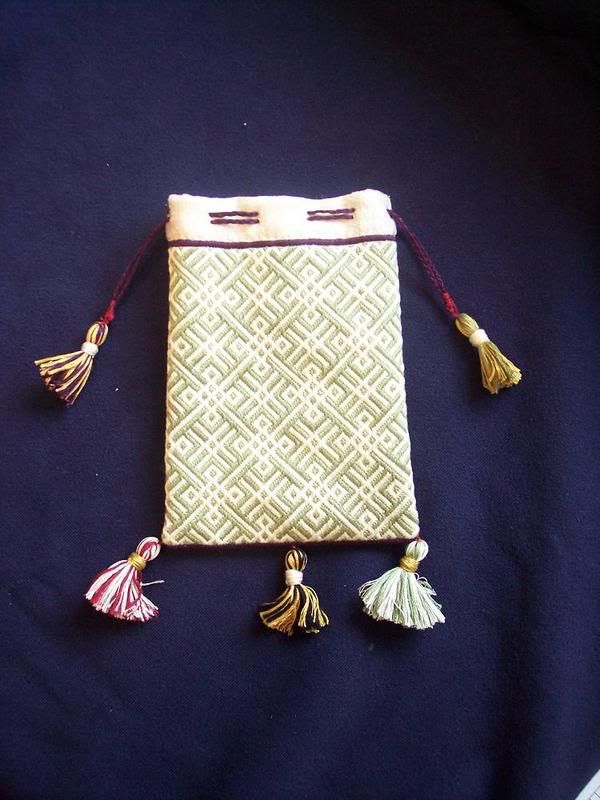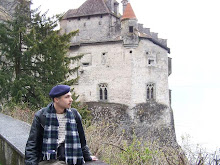Epitaph with the Assumption and Donors by Hans Pleydenwurff (Nürnberg, ca. 1470): a slim rectangular leather purse, suspended from (and attached directly to) the belt via a pair of chains. Looks like the attachment points at the belt were shaped like spades, and the attachment points on the top face of the purse were shaped like spades. I think I'm reading too much into it already by identifying them as such and such shapes, but honestly.. that's what they looked like. There was also some sort of plaque in the middle of the flap.. something you'd assume, on a modern purse, would conceal a snap-closure behind it. Again, I'm reading into it from a much too modern a perspective. But, haven't not seen any extant examples of this type, I don't know else how to describe it.
Another tidbit about this piece of art, in general, was the paternoster carried by the donor's wife (?). I wish I had a picture for Chris Laning at Paternosters, although maybe nothing she's never seen before, there was a nice single marker bead (
In another piece by Hans Pleydenwurff, the Beheading of St Barbara, there was a nice frame purse; black with a gold frame.. no tassles, but there were several knopfs that seemed to be decorated with pearls. No sketch of this can do it justice, I just really need to get permission to take a picture.
Lastly, St Christopher with the Infant Jesus (Sv Kryštof s Ježískem)... a wooden relief, by an unknown Bohemian artist ca. 1500-1510, with what Goubitz referrs to as a "harp frame" purse. When I'm reunited with my copy of the book I'll recheck this (otherwise back me up or correct me), but I seem to recall that he categorized this "type" soley on examples in art, since he had never seen an extant example. It is frustrating, because it's really difficult to figure out how they work without being able to hold one, or at least see one in the flesh.
P.S. Regarding the taxonomy Goubitz established: I love K. Larsdatter's site, particularly the purse page. However, I don't think I completely agree with some of the examples she's listed under the "harp frame" type. Of course, again due to the fact that these examples are all artistic representations, it can get a bit subjective. So that's just me :-)
That's all for now!







